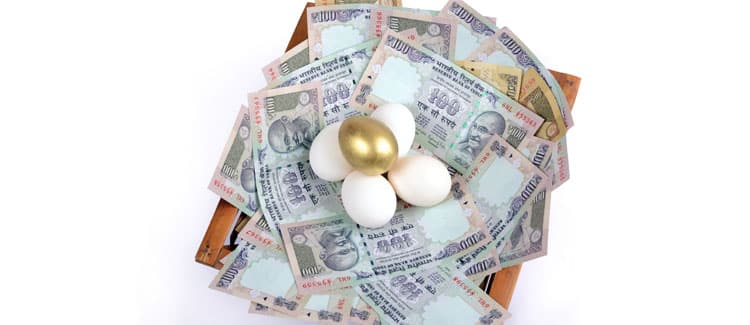How to Save Tax on ₹9 Lakh Salary
For individuals with an annual salary of ₹9 lakh, understanding how tax is calculated under the current system is essential. With the New Tax Regime becoming the default from FY 2025-26, many salaried taxpayers can reduce their tax liability significantly—even to zero—through available deductions and rebates. Read the article below to know how you can approach your tax planning under both the new and old regimes.
Old Tax Regime Slabs (Applicable if Opted For)
| Taxable Income | For Individuals below 60 years (Residents & Non-Residents) |
For Senior Citizens (60 to <80 years) (Residents Only) |
For Super Senior Citizens (80+ years) (Residents Only) |
| Up to ₹2,50,000 | Nil | Nil | Nil |
| ₹2,50,001 to ₹3,00,000 | 5% | Nil | Nil |
| ₹3,00,001 to ₹5,00,000 | 5% | 5% | Nil |
| ₹5,00,001 to ₹10,00,000 | 20% | 20% | 20% |
| Above ₹10,00,000 | 30% | 30% | 30% |
New Tax Regime Slabs (Default Option)
The New Tax Regime has simplified, uniform slab rates for all individuals, regardless of age.
| Taxable Income | Tax Rate for All Individuals (Residents & Non-Residents, All Ages) |
| Up to ₹4,00,000 | Nil |
| ₹4,00,001 to ₹8,00,000 | 5% |
| ₹8,00,001 to ₹12,00,000 | 10% |
| ₹12,00,001 to ₹16,00,000 | 15% |
| ₹16,00,001 to ₹20,00,000 | 20% |
| ₹20,00,001 to ₹24,00,000 | 25% |
| Above ₹24,00,000 | 30% |
Income Tax Changes From 1st April 2025
The Union Budget 2025 has introduced some key updates:
- Higher Rebate Under Section 87A: Under Section 87A, taxable income up to ₹12 lakh is eligible for a ₹60,000 rebate, reducing tax liability to zero.
- Standard Deduction: Salaried individuals can claim a ₹75,000 deduction.
- Relaxed TDS Limits: TDS on interest and rent payments has higher exemption limits.
- Simplified Filing: Time to file updated returns has increased from 2 to 4 years.
- New Provisions: Removal of some strict TDS rules and changes for ULIPs and capital gains.
Features of the New Tax Regime (FY 2025—26)
- Default Tax System: The new regime is now the default, but taxpayers can still choose the old regime each year if they want.
- Increased Exemption: The basic exemption limit increased from ₹3 lakh to ₹4 lakh.
- Higher Section 87A Rebate: Taxpayers earning up to ₹12 lakh can pay no tax after rebates.
- Standard Deduction for Salaried: ₹75,000 deduction reduces taxable income.
- Highest Surcharge: Remains at 25% for incomes above ₹2 crore.
Tax Calculation on ₹9 Lakh (New Regime)
The new regime for FY 2025—26 offers simplified slabs, lower rates, and limited deductions. Here's how the tax would apply before any rebates:
| Particulars | Amount |
| Gross Salary | ₹9,00,000 |
| Less: Standard Deduction | ₹75,000 |
| Taxable Income | ₹8,25,000 |
| Tax on ₹4—8L @5% | ₹20,000 |
| Tax on ₹8—8.25L @10% | ₹2,500 |
| Total Tax | ₹22,500 |
| Less: 87A Rebate | ₹22,500 |
| Net Tax Payable | ₹0 |
Therefore, if you're a salaried individual, the standard deduction of ₹75,000 further boosts your exemption. So, even if your gross salary is ₹9 lakh, your taxable income drops to ₹8.25 lakh. You're still well within the rebate threshold , and you pay no tax under the new regime. You pay zero tax if you're salaried and under ₹12 lakh taxable income.
Smart Tax Saving Strategies (FY 2025—26)
Effective tax planning can significantly lower your liability. Given below are key strategies, grouped by relevance to the new or old tax regime.
- Use Section 87A Rebate
If your taxable income is within ₹12 lakh, you can claim a rebate of ₹60,000 under Section 87A. This can reduce your tax liability to zero if planned properly. Applicable in the new regime. - Claim Standard Deduction (₹75,000)
Salaried and pensioned individuals automatically receive a ₹75,000 standard deduction under the new regime, which helps lower taxable income without needing to submit proofs. Claim Standard Deduction (₹75,000). Applicable in the new regime. - Invest Under Section 80C
You can reduce taxable income by up to ₹1.5 lakh through investments in PPF, ELSS, life insurance, and other eligible instruments—but only if you opt for the old regime. - Buy Health Insurance (Section 80D)
A deduction of up to ₹25,000 (₹50,000 for senior citizens) is available for health insurance premiums under Section 80D in the old tax regime. - Use Employer Benefits (HRA, LTA, Food Coupons)
Tax exemptions on components like House Rent Allowance (HRA), Leave Travel Allowance (LTA), and meal vouchers are available only under the old regime and can significantly reduce taxable salary. - Contribute to NPS (Section 80CCD(1B))
You can claim an extra ₹50,000 deduction for contributions to the National Pension System, but this is available only if you choose the old regime.
You can claim an extra ₹50,000 deduction for contributions to the National Pension System, but this is available only if you choose the old regime.
Key Takeaways for Taxpayers with Salary of ₹9 Lakh
- Taxpayers with ₹9 lakh salary can pay zero tax under both regimes with smart use of Section 87A.
- The new regime is simpler and suitable if you have fewer deductions.
- The old regime is better if you claim significant exemptions and deductions.
- Always compare both regimes before filing your return for maximum benefit.
Conclusion
Effective tax planning can help individuals earning ₹9 lakh effectively reduce their tax liability to zero under the New Tax Regime. The enhanced Section 87A rebate and standard deduction make it ideal for those with minimal deductions. However, the Old Regime may still be beneficial if you claim multiple exemptions. Comparing both options annually ensures optimal tax outcomes.
FAQ's
-
Do I need to file ITR even if my tax liability is zero?
Yes, if your income exceeds ₹2.5 lakh (old) or ₹4 lakh (new), filing ITR is mandatory. -
Can I switch regimes every year?
Yes, salaried individuals can choose the suitable regime each year. However, for professional incomes and business, switching can be done only once a year. -
Do I have to claim 87A manually?
No, if you file under the New Regime and your taxable income is ≤ ₹12 lakh, the 87A rebate is automatically applied. -
Which tax regime is better for 9 lakhs CTC?
Both regimes have their pros and cons. Here is a quick overview:- Old regime: Offers more deductions and exemptions, potentially leading to lower tax liability if you can utilize them effectively. However, the tax rates are higher.
- New regime: Lower tax rates but fewer deductions and exemptions. Simpler to calculate taxes but might not be as beneficial if you have many deductions.
-
How to save tax on 9 lakh income?
Some of the general tips for saving tax on a Rs. 9 lakh income are as follows:- Maximize deductions under sections like 80C, 80D, etc.: Invest in options like PPF, ELSS mutual funds, medical insurance, etc., to claim deductions on your taxable income.
- Claim HRA exemption: If you pay rent, you can claim an exemption on your House Rent Allowance received from your employer.
- Choose the right tax regime: Carefully compare the old and new tax regimes based on your income and investment profile to choose the one that minimizes your tax burden.
˜The insurers/plans mentioned are arranged in order of highest to lowest first year premium (sum of individual single premium and individual non-single premium) offered by Policybazaar’s insurer partners offering life insurance investment plans on our platform, as per ‘first year premium of life insurers as at 31.03.2025 report’ published by IRDAI. Policybazaar does not endorse, rate or recommend any particular insurer or insurance product offered by any insurer. For complete list of insurers in India refer to the IRDAI website www.irdai.gov.in
*All savings are provided by the insurer as per the IRDAI approved insurance plan.
^The tax benefits under Section 80C allow a deduction of up to ₹1.5 lakhs from the taxable income per year and 10(10D) tax benefits are for investments made up to ₹2.5 Lakhs/ year for policies bought after 1 Feb 2021. Tax benefits and savings are subject to changes in tax laws.
¶Long-term capital gains (LTCG) tax (12.5%) is exempted on annual premiums up to 2.5 lacs.
++Source - Google Review Rating available on:- http://bit.ly/3J20bXZ


- SIP Calculator
- Income Tax Calculator
- Compound Interest Calculator
- NPS Calculator
- Show More Calculator
Income Tax articles
Explore the popular searches and stay informed
- LIC
- Investment Plan
- Annuity Plan
- Child Plan
- Pension Plan
- ULIP Plan
- Child Investment Plan
- SIP
- LIC Calculator
- SIP Calculator
- SBI SIP
- ULIP Calculator
- Sukanya Samriddhi Yojana
- Best SIP Plans
- Retirement Planning
- SBI SIP Calculator
- HDFC SIP Calculator
- Sukanya Samriddhi Yojana Interest Rate
- NPS Interest Rate
- Deferred Annuity Plans
- SBI Annuity Deposit Scheme Calculator
- Immediate Annuity Plans
- Post Office Child Plan
- Prime Minister Schemes For Boy Child
- Government Schemes for Girl Child
- 50k Pension Per Month
- Atal Pension Yojana Calculator
- Best Pension Plan in India
- CIBIL Score
- 1 Crore Term Insurance
- Best Term Insurance Plan
- Term Insurance for Women
- Term Insurance for NRI
- Term Insurance
- Term Insurance Calculator
- Life Insurance
- Term Insurance with Return of Premium
- Whole Life Insurance
- Term Insurance vs Life Insurance
- What is Term Insurance
- Life Insurance Calculator
- 5 Crore Term Insurance
- 2 Crore Term Insurance
- 50 Lakh Term Insurance
- Term Insurance for Housewife
- Benefits of Term Insurance
- Term Insurance Terminology
- Medical Tests for Term Insurance
- Term Insurance for Self Employed
- Claim Settlement Ratio
- 10 Crore Term Insurance
- Term Insurance for Smokers
- 1.5 Crore Term Insurance
- Zero Cost Term Insurance
- FIRE Calculator















